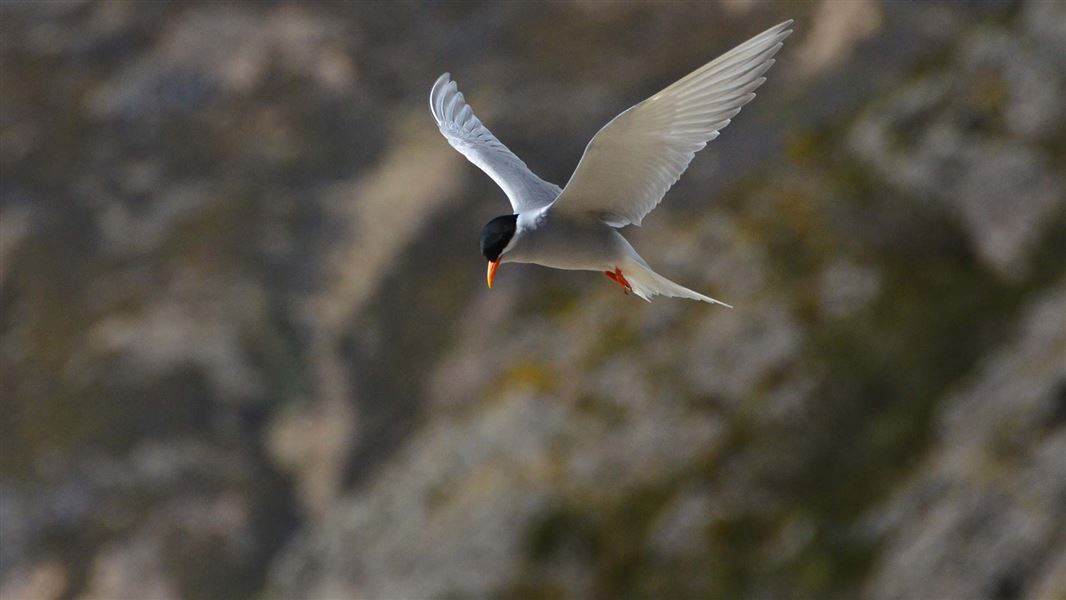New Zealand status: Endemic
Conservation status: Threatened–Nationally Endangered
Found in: Mainly braided rivers South Island
Threats: Predation, loss of suitable habitat
Species information: Black-fronted tern on NZ Birds Online
Black-fronted tern conservation
Emergency hotline
Call 0800 DOC HOT (0800 362 468) immediately if you see anyone catching, harming or killing native wildlife.
Rivers, lakes, deltas and ploughed fields are the feeding grounds of these terns. They breed mainly on braided rivers. Terns often desert their nests if people disturb them.
Terns and gulls nest in colonies on open shingle. This gives parent birds a better chance of noticing approaching predators. Groups of birds are better able to scare them off.
Their eggs and chicks are also well camouflaged. But, unlike other species, young gulls and terns must remain near the nest, relying on parents to bring food until they can fly and hunt for themselves.
Common threats to braided river birds
More on Threats to braided rivers.
Risky river breeding
Breeding on a riverbed is a risky business. Many eggs and chicks do not survive. Riverbed birds have adapted to cope with floods and are able to renest if eggs or chicks are lost.
Birds with good nesting sites are more likely to raise chicks successfully. The best nest sites have:
- islands surrounded by a moat of water for protection from predators
- high points which are less flood prone
- little or no vegetation for all round visibility
- a good food supply close at hand
- little or no disturbance.
Predators
Swamp harriers/kāhu and black-backed gulls/karoro are natural predators of braided river birds. These avian predators have taken advantage of changes made by humans and their numbers have increased dramatically.
Braided river birds have good camouflage and use distraction to cope with avian predators. Wrybills, oystercatchers and dotterels often pretend to have a broken wing to lead predators away. Terns, gulls and oystercatchers may dive-bomb and call loudly.
However these defences against avian predators are little use against introduced predators such as cats, stoats, ferrets, rats and hedgehogs. These are the main threats.
Ensuring the survival of the birds' natural open habitat is important in combating predation.
Habitat loss and human disturbance
The fragile ecology of the braided river system is being destroyed by the invasion of weeds.
Human activity including land development and recreational activities disturb nesting birds. Birds may abandon their nests if disturbed.
